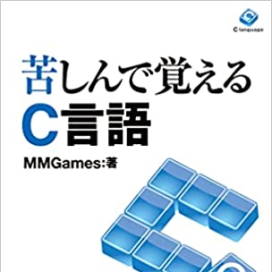
Read it right next to your computer. Book version bitter C
#include <stdio.h>
void sum(int, int, int *);
int main(void)
{
int value;
sum(50, 100, &value);
printf("%d\n", value);
return 0;
}
void sum(int min, int max, int *ans)
{
*ans = (min + max) * (max - min + 1) / 2;
return;
}#include <stdio.h>
void maxmin(int array[], int *max, int *min);
int main(void)
{
int i = 0, array[10], max, min;
do
{
printf("%d 番目の数:", i + 1);
scanf("%d", &array[i]);
i++;
} while (array[i - 1] != -1);
maxmin(array, &max, &min);
printf("最大値 %d : 最小値 %d\n", max, min);
return 0;
}
void maxmin(int array[], int *max, int *min)
{
int i = 0;
*max = 0;
*min = 100;
while (array[i] != -1)
{
if (array[i] > *max) *max = array[i];
if (array[i] < *min) *min = array[i];
i++;
}
}
Learning C language through suffering (Kushi C) is
This is the definitive introduction to the C language.
It systematically explains the basic functions of the C language.
The quality is equal to or higher than commercially available books.